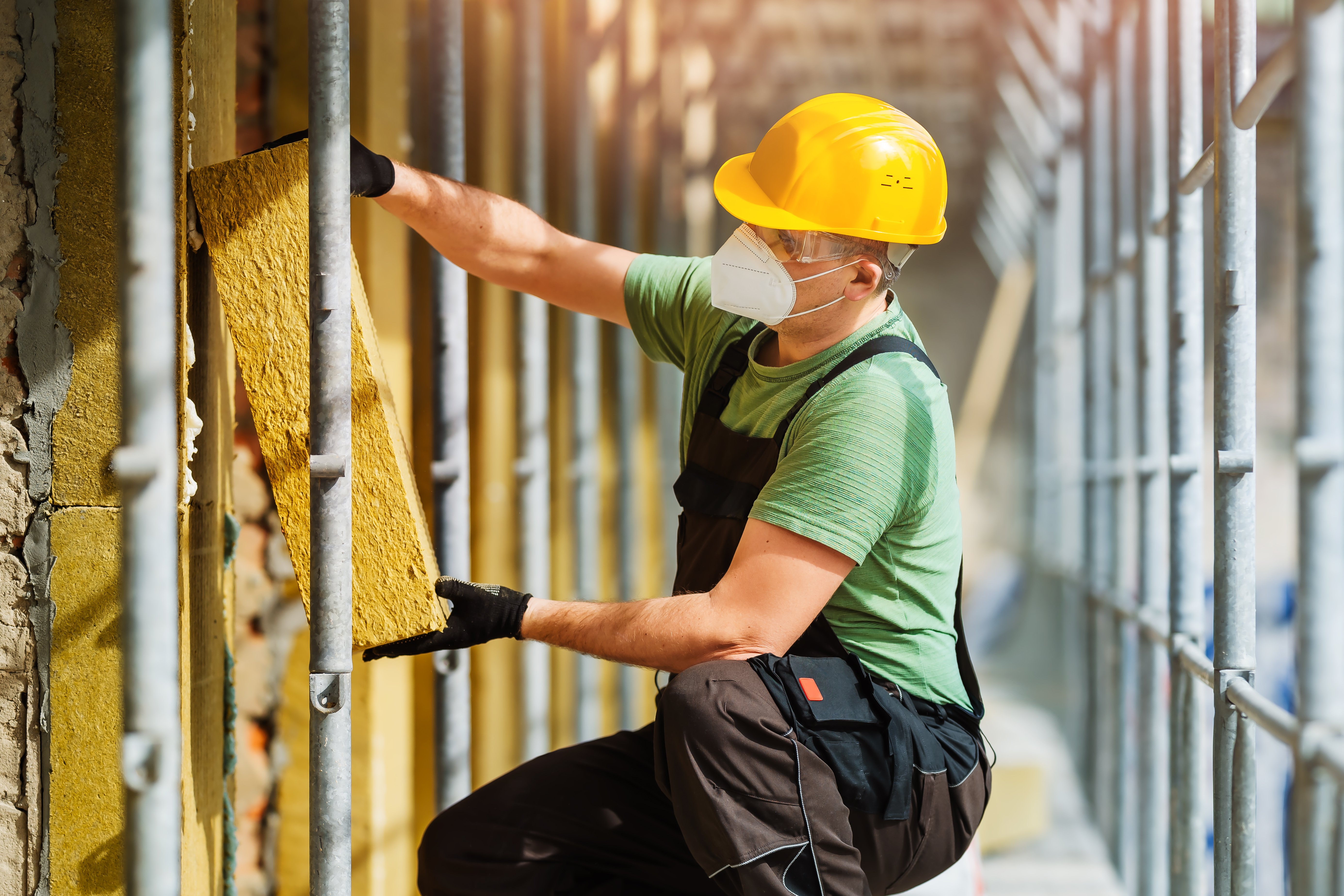This comprehensive guide explores the key changes and requirements of the updated Part L Building Regulations in England. These regulations, which set the standard for energy performance and carbon emissions of new and existing buildings, were recently updated to reflect changes in technology and drive continuous improvement.
The latest update came into effect in June 2022 and includes new energy efficiency targets and alterations to the assessment methodology.
The key takeaways from the updated Part L Building Regulations include: (Click to skip to section)
Part L Building Regulations Changes:
{Need help with Part L compliance? Sablono's powerful features enhance accountability, compliance-proof your workflows and protect against claims. Learn more here: Sablono's construction compliance software.}
1. Simplification and Alignment of Part L
Part L has been simplified into two volumes: Volume 1 specifically addresses dwellings, and Volume 2 covers buildings other than dwellings. This streamlined approach helps construction professionals better understand and comply with the applicable regulations based on the type of building project.
2. Compliance and Reporting Requirements
To comply with the updated regulations, photographic evidence is required to document adherence to the required standards.
These photographs serve as tangible proof of compliance. The latest Part L changes mean that a comprehensive record must be maintained throughout the entire construction process.
{Note: Did you know that Sablono ensures compliance with Part L building regulations and provides geo-tagged photographic evidence? Learn more here: Sablono's construction compliance software.}
Photos must:
-
Be of sufficient quality
-
Document compliance at each stage of the project
-
Include metadata detailing when and where they were taken
-
Include geotags with the exact coordinates, dates and time stamps.
Learn more about the role of photographic evidence in Part L compliance in our article: Part L Compliance - The Role of Photographic Evidence
3. New Carbon Emissions Targets
All new homes must produce at least 31% fewer carbon emissions, while new non-domestic builds need to achieve a reduction of at least 27%.
Learn more about Part L here: Part L Building Regulations: Everything You Need to Know.

4. New Minimum Energy Efficiency Standards
The update introduces new U-values for walls, windows, roof lights, and doors. These standards require increased thickness and glazing to minimize energy consumption and carbon emissions.
Get a summary of the latest Part L U-values in our article: Part L Building Regulations U Values.
5. Primary Energy
A new metric called primary energy is introduced to measure a building's heating efficiency and the energy needed to deliver it. It sets a maximum limit for a dwelling's primary energy use in a year.
The regulations introduce a maximum allowable primary energy usage per square meter per year (expressed as kWhPE/(m²·year)). This metric, calculated using SAP 10.2, determines the amount of primary energy required to meet specific energy demands.
6. Changes to Standard Assessment Procedure (SAP) Methodology
A revised version of the Standard Assessment Procedure (SAP 10.2) has been introduced for newly constructed dwellings.
SAP 10.2 modifies the carbon factors used in Target Emissions Rate (TER) calculations, prioritizing electricity over gas to account for the expected decarbonization of the grid.
This change is beneficial for buildings with electric heating, making it easier for them to meet the regulations.
SAP10 Building Regulations England Part L (BREL) Report
Builders and developers are required to have a compliant SAP10 BREL report before completing and handing over a building.
This report is used by the building control body to verify that the construction aligns with the initial approval, supported by photographic evidence.

7. Focus on Energy-Efficient Building Fabric
The Part L changes in 2022 prioritize a "fabric-first" approach, highlighting the importance of insulation, airtightness, and energy efficiency in building fabric elements like walls, doors, floors, and windows.
By improving insulation and reducing heat loss, buildings can retain warmth and minimize the need for excessive heating, resulting in lower energy usage and costs.
Key changes include:
-
Notional value for roofs decreased from 0.13 to 0.11
-
Notional value for windows and doors decreased from 1.4 to 1.2
-
Increase in window U-values to 1.2 W/(m2k)
-
External walls requiring greater thickness, ranging from 450mm to 600mm
Potential Solutions for Compliance:
-
Walls - Internal Block, thermally insulated plasterboard, increase cavity size, insulated lintels
-
Windows - Triple-glazed windows, insulated plasterboard reveals
-
Floors - Increased insulation
-
Roof - Mineral wall, external insulation, internal insulation
-
Doors - Insulated plasterboard reveals
.jpeg?width=6000&height=4000&name=AdobeStock_325534601%20(2).jpeg)
Impact on Different Parties and Trades
Compliance begins at the design stage, requiring close collaboration between builders, architects, and other key trades. It is essential to consider and plan for all elements of the regulations.
Each trade is responsible for providing certification that their work meets the required standards. Builders and developers should maintain detailed records of materials and systems used, supported by step-by-step photographic evidence, to avoid potential rework, delays, and penalties.
The updated regulations require early consideration during the design stage to ensure compliance and avoid costly adjustments later on. Different trades and parties will be impacted by the changes in different ways.
Here is a summary of some key outcomes to expect:
Main Contractors: Main Contractors will be required to provide geo-tagged photographic evidence, documentation and reports demonstrating compliance with Part L regulations. This can include energy performance calculations and other relevant information.
Architects: Architects should closely examine building designs to incorporate energy-efficient measures, such as optimizing orientation, shading, and incorporating renewable energy sources.
Builders: Builders will face the greatest impact as they adapt to energy-efficient designs, materials, and construction methods. This includes ensuring well-insulated building envelopes, minimizing heat loss, and addressing thermal bridging. Airtightness measures, such as vapour barriers, tapes, and sealants, may also be required.
Plumbers and HVAC Technicians: Plumbers and HVAC technicians will focus on installing more efficient heating and ventilation systems and increasing the use of renewable energy sources like solar, thermal, or heat pumps. They may also be responsible for maintaining existing heating and hot water systems to ensure compliance with Part L.
Electricians: Electricians will be involved in installing more efficient lighting systems, such as LED, and implementing lighting controls to minimize energy use. They may also install renewable energy sources like PV panels and wind turbines.
Conclusion: Part L Building Regulations Changes
The recent changes to Part L of the Building Regulations represent a significant shift towards improved energy efficiency, reduced carbon emissions, and the integration of renewable energy sources.
By simplifying the regulations, introducing new metrics, and emphasising a fabric-first approach, the revised Part L aims to create more sustainable and environmentally conscious buildings.
Need help with Part L compliance? Sablono's powerful features enhance accountability, compliance-proof your workflows and protect against claims. Learn more here: Sablono's construction compliance software
Frequently Asked Questions
What’s the reason for the Part L Building Regulations changes?
In June 2022, significant changes were made to the UK Building Regulations, specifically to Part L (Conservation of fuel and power). These changes serve as a transitional phase leading to more rigorous regulations called the Future Homes Standard, which will be implemented in 2025.
The primary goal of these initial changes is to reduce carbon emissions by 31% for every home in the UK. As a result, compliance with these new regulations is mandatory for all households.
What changes have been made to Part L building regulations in 2022?
The 2022 update of Part L Building Regulations introduced several changes, including new U-values for walls, windows, roof lights, and doors, the introduction of primary energy as a metric, and a revision of the SAP methodology (SAP 10.2).
How do the Part L changes affect new homes?
The updated Part L regulations set new carbon emissions targets for new homes, requiring at least a 31% reduction in carbon emissions compared to previous standards. Builders need to prioritize energy-efficient building fabric, insulation, and airtightness to meet these targets.
What is the fabric-first approach mentioned in the Part L changes?
The fabric-first approach means that emphasis is placed on optimizing the energy performance of a building's fabric, such as walls, doors, floors, and windows. This approach focuses on minimizing heat loss, maximizing insulation, and eliminating thermal bridging to reduce the energy demands of a building.
How does the revised SAP methodology (SAP 10.2) impact compliance?
SAP 10.2 is the updated version of the Standard Assessment Procedure used to assess the energy performance of new dwellings. It incorporates new carbon factors, accounting for the expected decarbonization of the grid. Compliance with SAP 10.2 is crucial for meeting the energy efficiency targets set by Part L.
What is the target primary energy rate and how does it affect buildings?
The target primary energy rate is a new metric introduced in the Part L changes. It sets a maximum allowable primary energy usage per square meter per year for buildings. This metric considers overall energy consumption for heating, insulation, and other factors, aiming to reduce the primary energy demands of buildings.



.png?width=1600&height=1000&name=MicrosoftTeams-image%20(76).png)